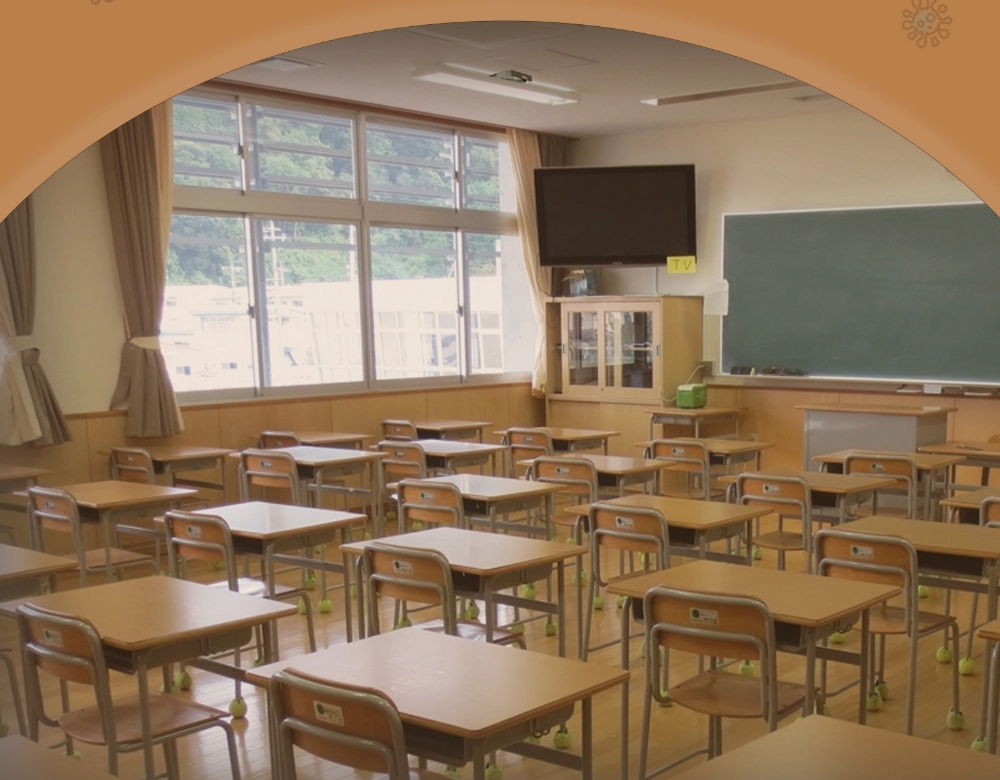- This topic is empty.
-
AuthorPosts
-
2025-08-18 at 5:49 pm #4537
In recent years, indoor air quality (IAQ) has emerged as a critical concern in educational institutions. Classrooms, often filled with 20–40 students, become hotspots for airborne particles, allergens, bacteria, and viruses. Poor IAQ can directly affect student concentration, attendance, and overall health. In this blog post, as a professional plasma air purifier manufacturing factory, RUIAIR will share the advantages of classroom air purifiers with plasma for sale.
Understanding Plasma Air Purification Technology
Plasma technology in air purifiers involves generating a highly energized state of matter—plasma—through electrical discharges. This process releases both positive and negative ions into the air. When these ions attach to pollutants such as bacteria, viruses, and volatile organic compounds (VOCs), they break down their molecular structure, rendering them harmless.
Unlike conventional HEPA filtration, which captures particles but does not destroy them, a classroom air purifier with plasma actively neutralizes microorganisms and decomposes harmful gases, providing a deeper level of purification.

Why Classrooms Need Plasma Air Purifiers?
-
High Occupancy Density
Classrooms are enclosed spaces where a high number of individuals share the same air for extended periods. The risk of airborne transmission of pathogens is significantly elevated. -
Frequent Airborne Allergens
Dust, pollen, and mold spores can easily accumulate in schools, triggering allergies and asthma attacks among sensitive students. -
Impact on Learning and Cognitive Performance
Poor air quality is linked to fatigue, headaches, and reduced cognitive function. Cleaner air contributes to better attention spans and academic performance. -
Seasonal Illness Transmission
Cold and flu viruses spread rapidly in classroom environments. Plasma air purifiers can reduce airborne viral loads, decreasing absenteeism rates.
Key Features of Classroom Air Purifier with Plasma Technology
When selecting the right model for a school environment, several essential features should be considered:
-
Dual Filtration and Plasma Function
A robust HEPA filter for particulate matter combined with plasma ionization ensures both physical capture and molecular neutralization of contaminants. -
High CADR (Clean Air Delivery Rate)
The higher the CADR, the more quickly and effectively the unit can refresh classroom air. -
Quiet Operation
Learning environments require minimal noise interference. Many modern plasma purifiers operate at under 35 decibels, ensuring they don’t disrupt lessons. -
Energy Efficiency
Since these devices may run continuously during school hours, choosing an energy-efficient model reduces operating costs. -
Safety Certification
Units should meet safety standards and be certified for ozone emission compliance, ensuring they are safe for prolonged exposure.
Science Behind Plasma' s Effectiveness
The plasma technology used in air purifiers is often referred to as bipolar ionization or non-thermal plasma. The ions generated seek out airborne contaminants, destabilizing their protein structures or breaking apart chemical bonds. For pathogens such as influenza or SARS-CoV-2, plasma ions can inactivate them before they settle or spread.
Moreover, plasma is highly effective against odors and chemical pollutants. In classrooms that use art supplies, science lab chemicals, or cleaning agents, VOC levels can be elevated. Plasma technology breaks these gases down into harmless compounds like carbon dioxide and water vapor.
Comparative Advantages Over Traditional Purifiers
While standard HEPA purifiers are excellent at removing dust and pollen, they have limitations:
-
Microbe Neutralization: HEPA filters trap bacteria and viruses but do not kill them, leaving a risk if filters are not replaced regularly. Plasma technology neutralizes microbes on contact.
-
Odor Removal: Plasma purifiers excel at removing odors from the air, unlike HEPA-only systems.
-
Filter Longevity: Because plasma helps break down particles, filters may last longer before needing replacement.
Implementation in Schools: Best Practices
To achieve optimal results when installing a classroom air purifier with plasma, schools should follow these guidelines:
-
Room Size Matching
Choose a unit with a coverage capacity that matches or slightly exceeds the classroom’s square footage. -
Placement
Position the purifier where airflow is unobstructed—ideally in a central location away from walls or large furniture. -
Continuous Operation During Class Hours
Intermittent operation is less effective. Running the unit continuously ensures consistent air quality. -
Maintenance Schedule
Even with plasma technology, filters require periodic cleaning or replacement to maintain efficiency. -
Teacher and Student Awareness
Educators should be informed about the purifier’s functions, so they can explain its role to students and encourage good IAQ habits like keeping windows closed during pollen season.
Case Studies: Positive Outcomes from Plasma Purifiers in Schools
Several schools across North America and Asia have implemented plasma-based purifiers with measurable results:
-
Reduced Illness-Related Absences: One district reported a 20% drop in flu-related absences after installation.
-
Improved Test Scores: Cleaner air correlated with higher concentration levels and better standardized test results.
-
Odor-Free Classrooms: Art and science classrooms experienced significantly reduced chemical odors, improving comfort for both students and teachers.
Addressing Safety Concerns
Some people worry about ozone production in plasma air purifiers. Reputable models designed for classroom use comply with strict ozone emission standards, producing levels well below safety thresholds. Schools should always verify product certifications from recognized safety organizations before purchase.
Conclusion: Breathing Easy, Learning Better
A classroom air purifier with plasma technology is not just a health safeguard—it is an investment in better academic performance, student well-being, and overall school productivity. By proactively improving air quality, educators create an environment where students can focus, participate, and thrive.
Clean air should not be a luxury; in schools, it is a fundamental requirement for effective learning. Plasma technology provides a scientifically proven, practical solution to meet this need now and in the future
http://www.sh-ruiair.com
RUIAIR -
-
AuthorPosts
- You must be logged in to reply to this topic.

